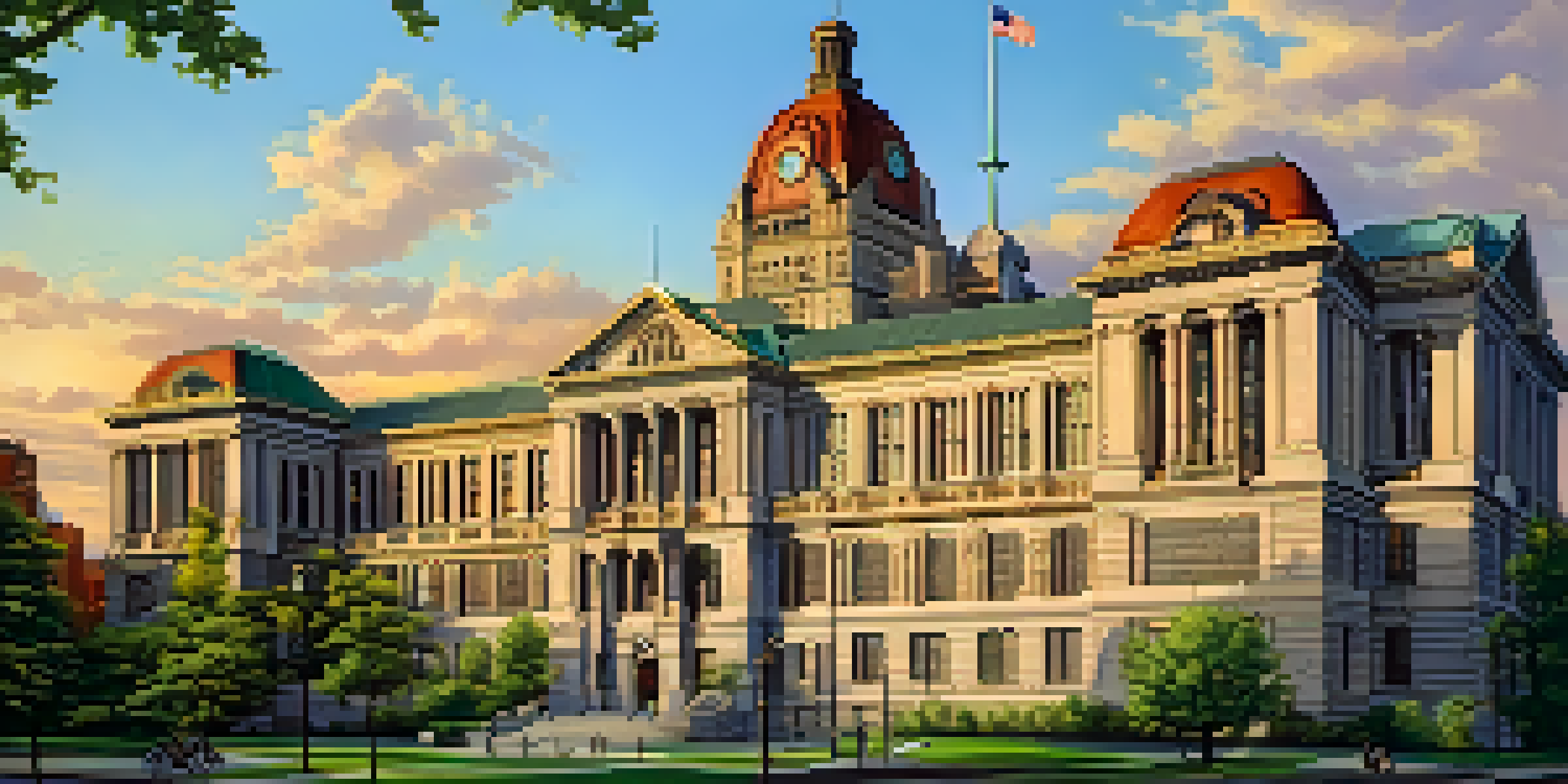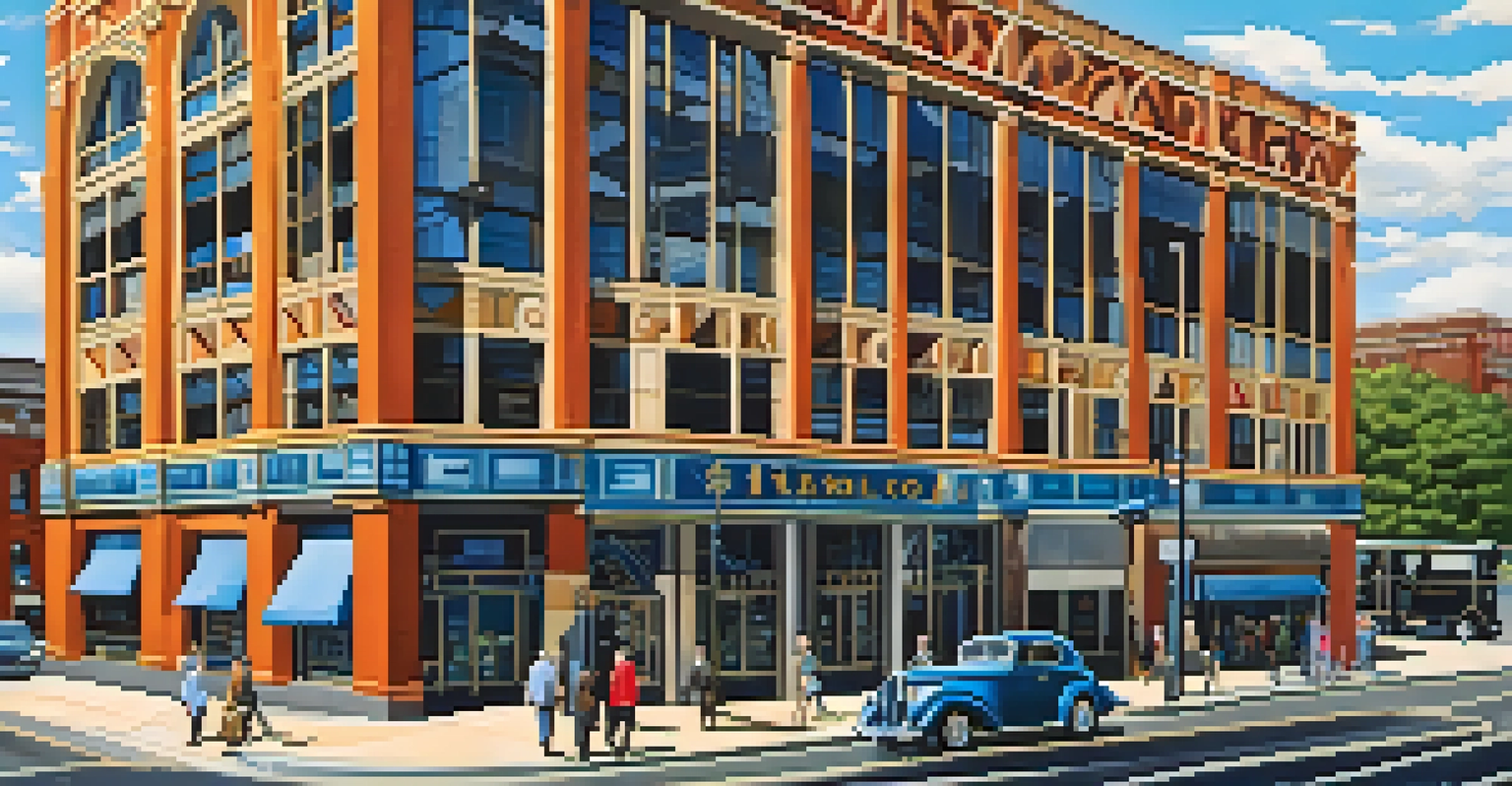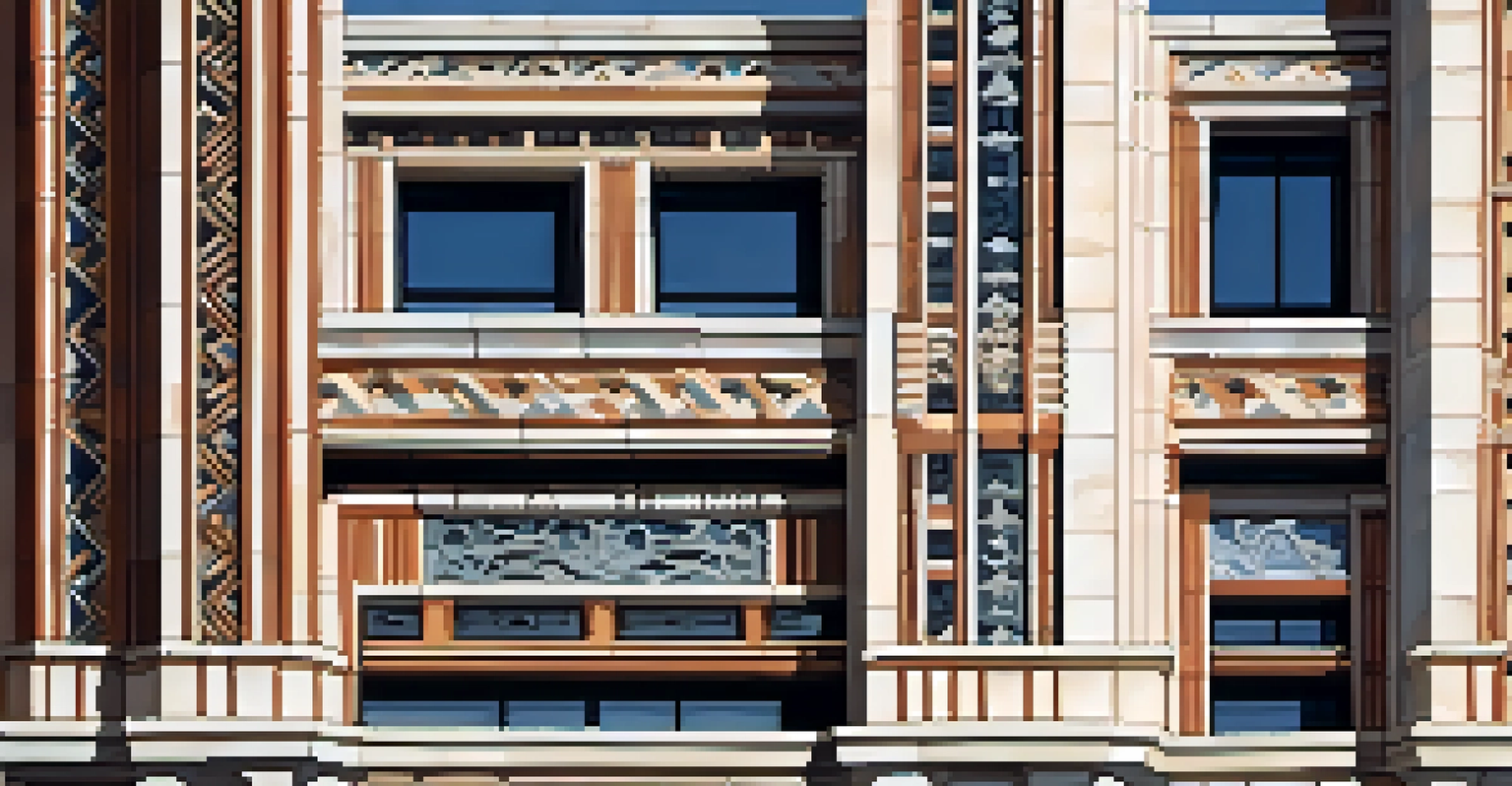The Art Deco Movement in Buffalo: A Unique Architectural Era

Introduction to the Art Deco Movement in Buffalo
The Art Deco movement emerged in the early 20th century, bringing a new aesthetic to architecture and design. In Buffalo, this style flourished between the 1920s and 1940s, leaving a unique imprint on the city's skyline. Characterized by bold geometric shapes and vibrant colors, Art Deco represents a departure from the ornate styles of the past, embracing modernity and innovation.
Architecture is the learned game, correct and magnificent, of forms assembled in the light.
Buffalo's Art Deco architecture reflects the optimism and energy of the era, often incorporating local materials and craftsmanship. Buildings like the Buffalo City Hall and the former Harlow C. Curtiss Building showcase this style's distinctive features, such as zigzag patterns and stylized motifs. These structures not only highlight the artistic spirit of the time but also serve as a testament to the city’s architectural evolution.
As we delve into the heart of Buffalo's Art Deco legacy, we’ll explore the key buildings, their historical significance, and the impact of this movement on Buffalo's identity. By understanding the Art Deco era in Buffalo, we can appreciate how it shaped the city into what it is today.
Key Characteristics of Art Deco Architecture
Art Deco architecture is instantly recognizable due to its distinctive characteristics. It often features bold geometric forms, rich colors, and intricate detailing that convey a sense of luxury and modernity. This style embraces symmetry and streamlined designs, making buildings appear both elegant and dynamic, a perfect reflection of the jazz age's exuberance.

In Buffalo, this architectural style is marked by the use of local materials, such as limestone and terra cotta, which add a unique touch to its structures. Decorative elements often draw inspiration from nature, technology, and ancient cultures, resulting in a rich tapestry of visual storytelling. This blend of influences creates buildings that are not only functional but also artistic masterpieces.
Buffalo's Art Deco Legacy
The Art Deco movement significantly shaped Buffalo's architectural identity, leaving behind iconic buildings that reflect the city's historical evolution.
When you walk through Buffalo, you can see these characteristics come to life in various structures. From the iconic Buffalo City Hall with its soaring tower to the sleek lines of the Marine Midland Building, each example showcases how Art Deco redefined the urban landscape and captured the spirit of a transformative period in history.
Notable Art Deco Buildings in Buffalo
Buffalo boasts several notable Art Deco buildings that stand as proud symbols of this architectural era. The Buffalo City Hall, completed in 1931, is perhaps the most prominent example, featuring a stunning tower that reaches 32 stories high. Its facade is adorned with intricate carvings and sculptures, making it a focal point of the city's downtown area.
Every great architect is - necessarily - a great poet. He must be a great original thinker, and he must understand that architecture is a language of forms.
Another significant structure is the former Harlow C. Curtiss Building, which showcases the style's hallmark geometric motifs and vibrant colors. This building, along with the Marine Midland Building, exemplifies how Art Deco can harmonize with the surrounding urban environment while still making a bold statement. Each of these structures contributes to Buffalo's architectural narrative, telling the story of a city embracing modern design.
These buildings are more than just facades; they represent the aspirations and creativity of their time. As we explore these landmarks, we gain insight into the cultural context of the Art Deco movement and its lasting influence on Buffalo's architectural heritage.
The Cultural Impact of the Art Deco Movement
The Art Deco movement was not just about architecture; it was a cultural phenomenon that influenced art, fashion, and design across the globe. In Buffalo, this movement mirrored the city's industrial growth and the optimism of the post-World War I era. The vibrant colors and bold designs of Art Deco buildings echoed the lively spirit of the Roaring Twenties.
As the city expanded, Art Deco architecture became synonymous with progress and modernity. The style was often associated with the rise of the middle class and a newfound appreciation for luxury. In Buffalo, this cultural shift was evident in public buildings, theaters, and even residential homes, as people sought to express their aspirations through design.
Cultural Impact of Art Deco
Art Deco influenced not just architecture but also art and design, mirroring Buffalo's industrial growth and the optimism of the post-World War I era.
The legacy of this cultural impact continues to resonate today. By appreciating Buffalo's Art Deco architecture, we not only celebrate a distinctive era but also acknowledge the city's ongoing evolution as a vibrant urban center with a rich historical tapestry.
Preservation Efforts for Art Deco Structures
As with many architectural styles, the preservation of Art Deco buildings is crucial for maintaining Buffalo's historical integrity. Over the years, several organizations have worked tirelessly to protect and restore these unique structures. Efforts include securing funding for renovations and raising public awareness about the importance of preserving Buffalo's architectural heritage.
Community support plays a vital role in these preservation initiatives. Local residents often band together to advocate for the protection of iconic buildings, recognizing their cultural significance and contribution to the city's identity. This grassroots approach not only fosters a sense of pride but also encourages collaboration between citizens and city officials.
Preserving Buffalo's Art Deco architecture is not just about maintaining physical structures; it's about honoring the stories they tell. Each building stands as a testament to the creativity and resilience of a community that values its history while looking toward the future.
Art Deco's Influence on Modern Architecture
Art Deco's impact extends beyond its own era, influencing modern architecture in various ways. Many contemporary architects draw inspiration from the bold geometric shapes and rich materials characteristic of this style. By integrating elements of Art Deco into modern designs, architects create a dialogue between past and present, blending history with innovation.
This influence can be seen in recent renovations of historical buildings, where original Art Deco features are preserved and highlighted. Such projects not only respect the architectural heritage but also bring a fresh perspective to these timeless designs. The revival of Art Deco elements in modern architecture showcases a continued appreciation for this unique style.
Preservation Efforts Matter
Community-driven preservation initiatives are vital for maintaining Buffalo's Art Deco heritage, ensuring that these unique structures continue to tell their stories.
As Buffalo continues to grow and evolve, the legacy of Art Deco remains a vital part of its architectural identity. By embracing this influence, the city can create a harmonious blend of old and new, ensuring that the spirit of the Art Deco movement lives on.
Conclusion: Celebrating Buffalo's Art Deco Heritage
Buffalo's Art Deco movement represents a remarkable chapter in the city’s architectural history. From its iconic buildings to its cultural significance, this style has shaped Buffalo's identity and continues to inspire residents and visitors alike. As we take a closer look at these structures, we gain a deeper appreciation for the creativity and vision that defined this era.
Celebrating Buffalo's Art Deco heritage means recognizing the importance of preservation and the stories behind each building. It encourages us to engage with our city’s history and to advocate for the protection of its unique architectural landscape. By doing so, we ensure that future generations can experience and appreciate the beauty of these structures.

In exploring the Art Deco movement in Buffalo, we embrace a rich legacy that connects us to our past while inspiring future creativity. Let's continue to celebrate and support the preservation of this unique architectural era for years to come.